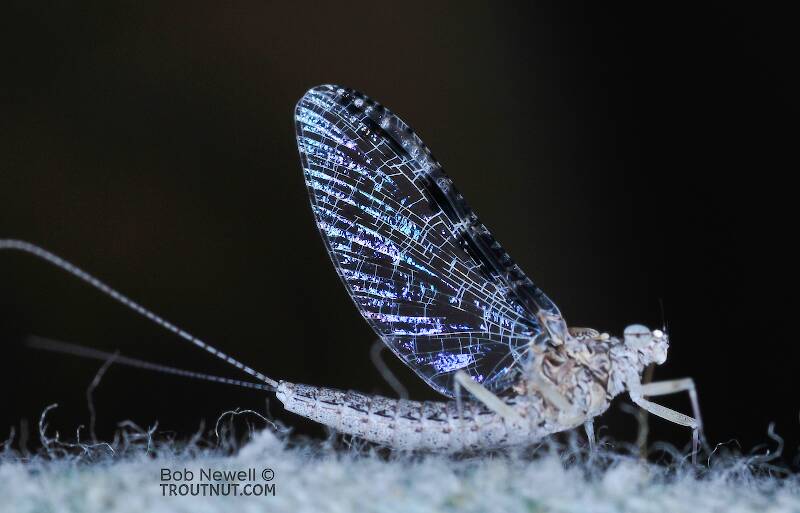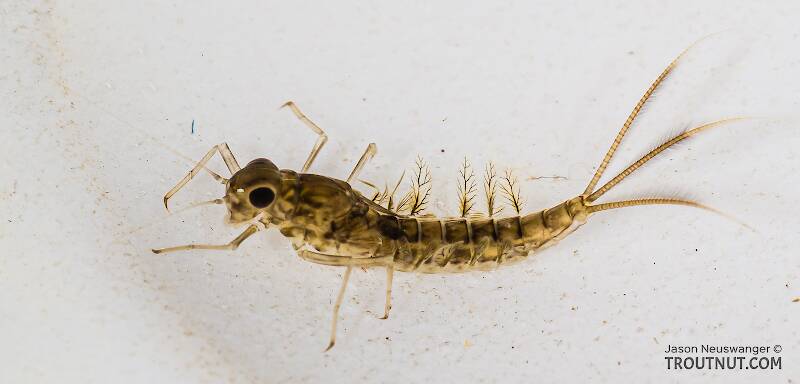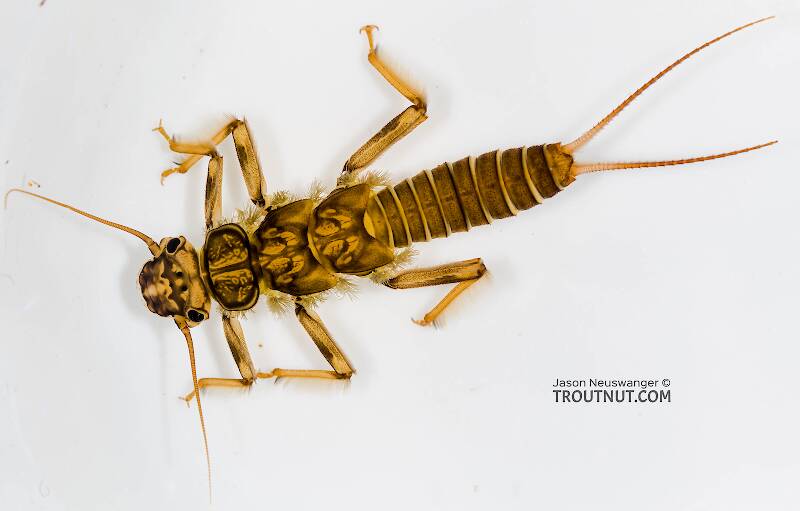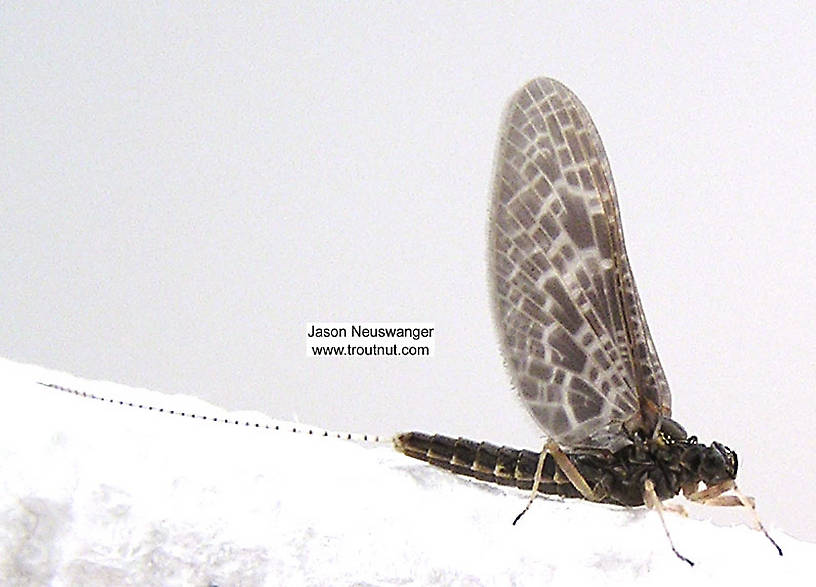
Salmonflies
Pteronarcys californica
The giant Salmonflies of the Western mountains are legendary for their proclivity to elicit consistent dry-fly action and ferocious strikes.
Featured on the forum

Troutnut is a project started in 2003 by salmonid ecologist Jason "Troutnut" Neuswanger to help anglers and
fly tyers unabashedly embrace the entomological side of the sport. Learn more about Troutnut or
support the project for an enhanced experience here.
Red Speckled Dun
This common name refers to only one species. Click its scientific name to learn more.
Mayfly Species Callibaetis ferrugineus
These are very rarely called Red Speckled Dun.
The sub-species Callibaetis ferrugineus ferrugineus and Callibaetis ferrugineus hageni taken together are by far the most important Callibaetis taxon in American trout waters. In extant angling literature, the sub-species ferrugineus ferrugineus inhabiting the east and Midwest is referred to as ferrugineus sans the sub-species name. In the West, Callibaetis ferrugineus hageni is referred to by many old and familiar synonyms, such as americanus, nigritus, and coloradensis. While important in the East and Midwest, it is in the West where Callibaetis ferrugineus hageni has achieved legendary status. Many western stillwater anglers look to the hatches of these speckled duns and spinners as the highlight of their seasons and have coined the phrase "gulpers" to describe the trout's feeding activity. In the West, some spring fed lower elevation lakes with longer growing seasons can produce as many as three discrete broods. In typical baetid fashion, these broods will be larger and darker in the Spring tending smaller and lighter as the season progresses.

These adults are probably C. ferrugineus.

This nymph was one of a horde I could see cruising the still shallows of a cold tailwater, mixed in with an intense emergence of duns. It's one of four specimens I photographed together from the same hatch, also including a male dun, a female dun, and a male spinner.
This nymph keys to either Callibaetis ferrugineous or Callibaetis pallidus. The lack of a darkened preapical band on the femora would suggest pallidus, but I can't definitively make out the "single seta" on the outer, ventral apex of any of the tarsi, the length of which is supposedly a more reliable characteristic to tell the species spart. I can maybe make something out on one of the legs at the highest magnification, and its dimensions would suggest ferrugineous.
This nymph keys to either Callibaetis ferrugineous or Callibaetis pallidus. The lack of a darkened preapical band on the femora would suggest pallidus, but I can't definitively make out the "single seta" on the outer, ventral apex of any of the tarsi, the length of which is supposedly a more reliable characteristic to tell the species spart. I can maybe make something out on one of the legs at the highest magnification, and its dimensions would suggest ferrugineous.
See 5 more specimens...



